Pancha Bhoota Sthalams, the 5 Shiva Temples that signify five elements of life
In South India, Bhagwan Shiva is worshipped as the presiding deity of the five elements of Nature. Let us get to know what are these five Shiva temples signify the five elements of Nature
Total Views |
Bhagwan Shiva is widely worshipped across India. Devotees across the country express their reverence through elaborate rituals, ceremonies, and festivals dedicated to Him. Similarly, in South India, He is worshipped as the presiding deity of the five elements of Nature.
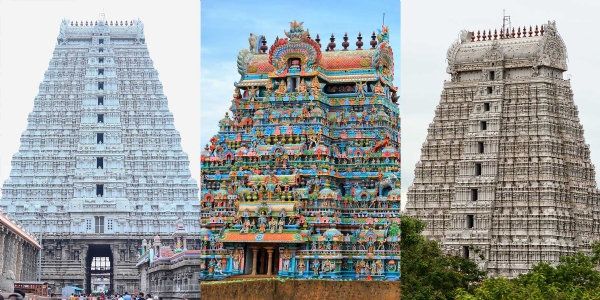
Na, Ma, Shi, Va, Ya – these five syllables indicate the five elements – Earth, Water, Fire, Air, and Ether. The five elements are the building blocks of everything in Creation, including the human body, and Bhagwan Shiva is the upholder of the five elements.
So, in dedication to Bhagwan Shiva, there are the Pancha Bhoota Sthalams – the five Shiva temples that represent each of above five elements of Nature. All of these temples are located in the Southern part of India with four located in Tamil Nadu and one in Andhra Pradesh.
Let us get to know what are these five Shiva temples signify the five elements of Nature
Ekambareshwarar Mandir (Earth Element)
In the Ekambareshwarar Mandir of Tamil Nadu, Bhagwan Shiva is represented by a Lingam made out of sand to depict the Earth element. Ekambareshwarar means Bhagwan of the Mango Tree and there is a legend regarding the origin of the temple. Even today, to prevent the sand-made Shiva Lingam from deteriorating, the Abhishekam is done with jasmine oil (as it is a low-density fluid).
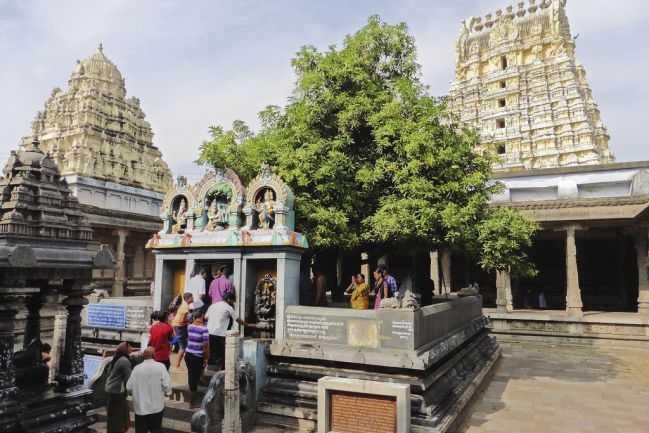
The temple is the tenth largest temple in India, spread over 23 acres and has one of the tallest Gopurams (monumental ornate gateway tower) in South India, at 190 feet. Having been in existence since at least 600 AD, the Ekambareshwarar Mandir is one of the most ancient temples in India. There is a mango tree inside the temple that is said to be more than 3000 years old.
Jambukeshwarar Mandir (Water Element)
The Jambukeshwarar Temple in Trichy, Tamil Nadu depicts the water element. Here, Bhagwan Shiva is worshipped in the form of Appu Lingam (a water Lingam). The sanctum of Jambukeswara has an underground water stream and in spite of pumping water out, it is always filled with water. It is believed that the Parvathi Devi worshipped Bhagwan Shiva in this temple, and so even today the priests of the temple dress up like a woman and offer prayers to the Him as a symbolic depiction of Goddess Akhilandeshwari’s worship. This daily ritual is attended by many pilgrims every day.
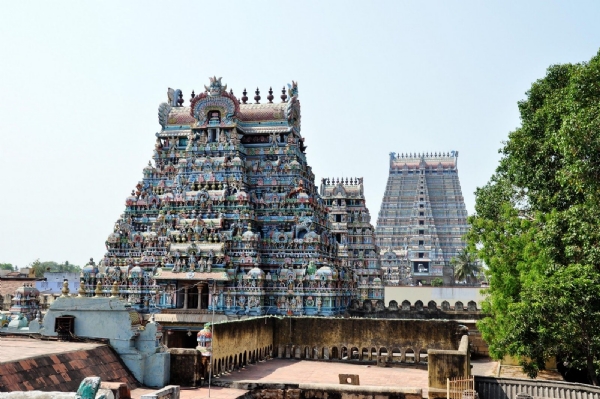
The temple is around 1800 years old and was built by Kocenganna Chola with the inscriptions on the walls of the temple from the Chola period. The Uchi Kala Pooja, which is conducted every afternoon, is very famous; in this pooja, the priests dress up in a saree, representing Goddess Parvathi, and perform Abhishekam on the Appu Lingam.
Arunachaleswarar Mandir (Fire element)
The Arunachaleswarar Mandir depicts the Fire element bestowed by BhagwanShiva and is represented by the Agni Lingam. The Arunachaleshwarar Mandir is one of the most visited and revered pilgrim centres in India. It is the largest temple in the world dedicated to the worship of Bhagwan Shiva.
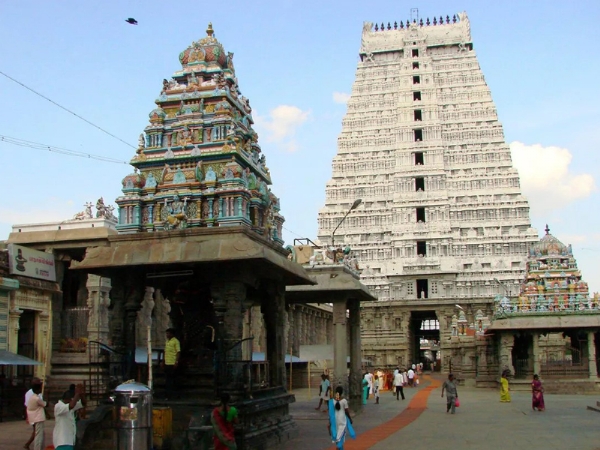
Every full moon, thousands of pilgrims perform the Girivalam, which is a form of worship done by the circumambulation of the Arunachala hill. This is a 14-km long walk. The legend is that this walk washes away sins, fulfils desires, and gives one freedom from the cycle of birth and death. The temple has four Gopurams, one on each side. The highest of these is called Rajagopuram, which is 217 feet in height and is the third largest in India.
5 Major Shiva Temples or Pancha Bhoota Stalam signifying the five elements of life
— Ankita (@AnkitaBnsl) June 26, 2023
1. Jambukeswarar Temple, Tamil Nadu Represents "Water" element pic.twitter.com/zygqKk0OYT
Kalahastheeshwara Mandir (Air element)
Located on the banks of the Swarnamukhi River, the Kalahastheeshwara Mandir depicts the Air element. Bhagwan Shiva is worshipped at this temple in the form of Vayu Lingam, representing the wind. Notably, Srikalahasti is known as the Kailash of the South. There is a lamp inside the inner sanctum that is constantly flickering despite the presence of air inside. The Vayu Lingam can be observed to move even when the priests close off the entrance to the main deity room, which does not have any windows. The Lingam is white and is considered Swayambhu, or self-manifested.
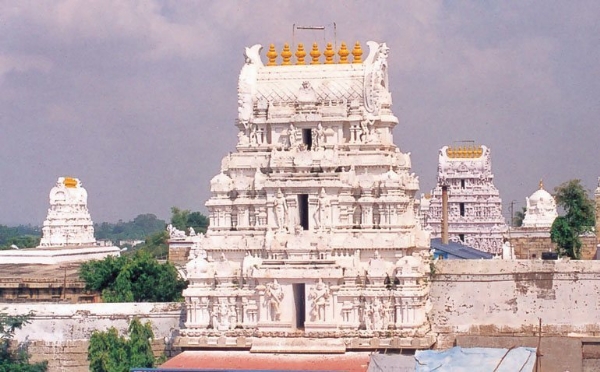
The temple is famous for their Rahu-Kethu poojas. It is believed that the ill-effects manifesting due to the positioning and movements of the planets Rahu and Kethu can be warded off when this particular Pooja is performed with utmost devotion. It is said that the priests never touch the Vayu Lingam of the Kalahastheeshwara temple with their hands.
Thillai Nataraja Temple (Ether element)
The Thillai Nataraja Temple in Chidambaram worships the Ether (Sky) element. BhagwanShiva is worshipped in His formless form in this temple. The temple is the fifth largest temple in India, expanding over a space of 40 acres, located in the heart of the town of Chidambaram. The word “Chidambaram” is derived from the word “Chit”, which means consciousness, and “Ambaram”, which means the sky. It refers to the “Sky of Consciousness”, which is the ultimate aim of human life.
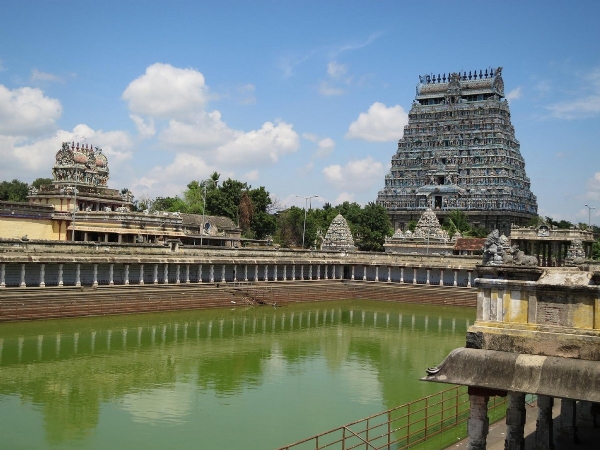
It is the only temple out of the Panch Bhoota Sthalam where Bhagwan Shiva is represented by an anthropomorphic idol rather than the Lingam. The temple also worships Bhagwan Shiva in the form of a Lingam made out of crystal and in his formless form (represented by an empty room). The Gopuram of the temple carries a gold-plated roof by the Chola King Parantaka. Legend has it that the temple is located at the lotus heart of the universe – Virat hridaya padma sthalam.

